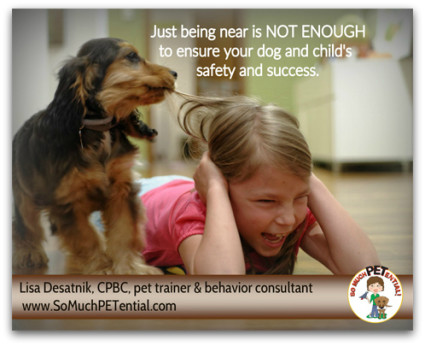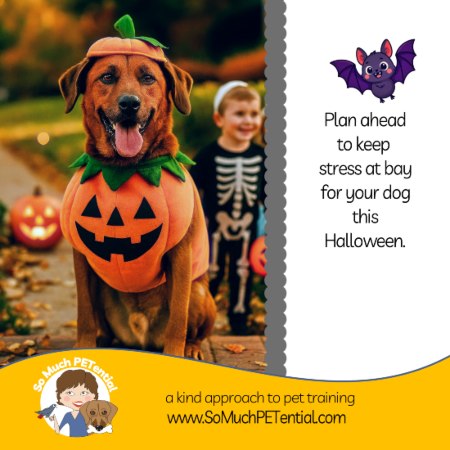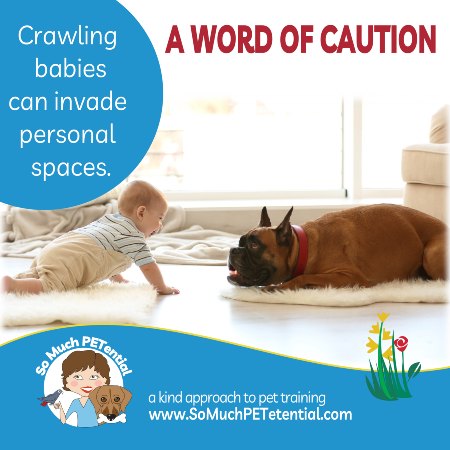There is so much written out there about the benefits to kids of having a dog. And, for the majority of families who are reading this, you know this first hand. I know I do. Growing up, I had a very special relationship with our poodle.
As a trainer, however, I also now see situations where family dogs back away from kids or do not come when kids call. I have gotten a number of calls from concerned parents whose dog has even growled at children – or worse.
 Here is the thing that we need to keep in mind, although children may adore their family pet, they do not always know ‘how’ to be a good dog friend. Kids may move quickly, yell and scream, lean over dogs, grab for dogs or any number of other things.
Here is the thing that we need to keep in mind, although children may adore their family pet, they do not always know ‘how’ to be a good dog friend. Kids may move quickly, yell and scream, lean over dogs, grab for dogs or any number of other things.
As a parent, caregiver and/or other adult role model you have a very important job to do – to help that relationship between your child or children and your dog (and other dogs) succeed.
I talk a lot about steps adults can take and one of them is supervision. However, supervision is defined in many ways. Advice is given often to parents that dogs and young kids should never be left in a room alone together, but passive supervision (meaning the adult is in the same room, yet focused on other things) can also have the potential of being unsafe. It can take a split second for an incident to escalate.
Active supervision is when you are watching your kids and your dog, and are able to intervene if necessary. Taking that one step further, in order to know when intervention is needed, it is important to be able to recognize trouble.
Here are a few observations that can help you to be a better, more effective active supervisor.
Know how a dog shows he is content. Generally, your dog’s muscles will be loose and relaxed. His mouth may be open, he may be panting with a regular tempo, his tail and ears will be held in their natural positions, and his tail may wag from side to side or in a circular motion. He may be engaged with and or nudging up to your child.
Know how a dog shows he is uncomfortable with your child. Some of the signs to watch for include that your dog may step back, turn away, shake, lick his lips, yawn, have a closed and tense mouth, have ears pinned back, hold his tail down, roll over on his back in a sign of submission, or show a half moon of white in his eyes.
Know how a dog escalates his body language. If you do not recognize and intervene, your dog may have a raised and rigid tail, he may bark and move backward (or position himself over his forelegs, ready to lunge), stare at your child, show his teeth or growl. This escalation can occur within seconds, especially if there is a history of your dog having his early warning signs listened to.
Know when your dog is beginning to become aroused. A few signs to watch for include a low and deliberate tail wag (or tail held high), tense body muscles, standing with his weight on his front legs. Also, your dog may begin jumping and chasing your child.
If your dog is exhibiting any of the signs that I have listed, it is time to intervene. Please do not punish your dog for communicating in his language how he feels. Instead, redirect your child or your dog or both and allow your dog the temporary distance that he wants.
Additionally, you should intervene if your child pulls your dogs ears, tail or other body part; pokes your dog; or jumps, chases, lays on, holds your dog in a headlock.
Raising dog Super Heroes is no easy task but the rewards are so great.
If you have a young child, please consider registering for my next My Dog’s Super Hero class. I teach children (with a parent) how dogs communicate, how to be a good dog teacher, and how to be a fun and safe friend. Please visit my CLASSES page for upcoming information.






